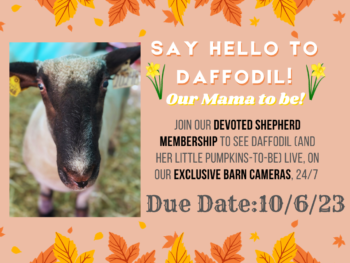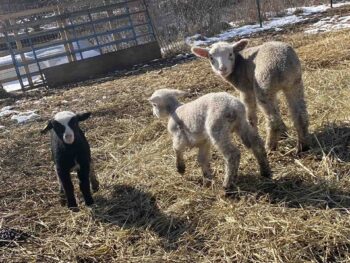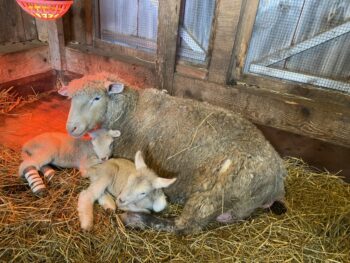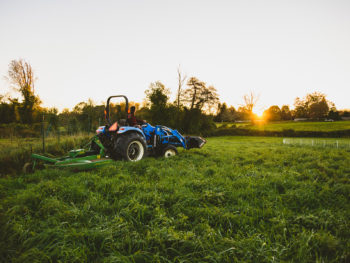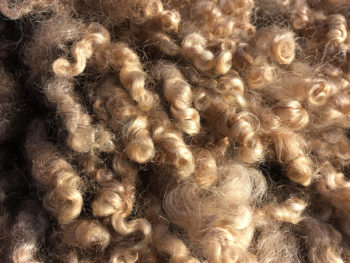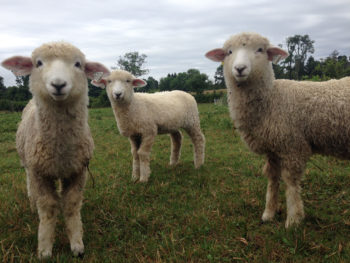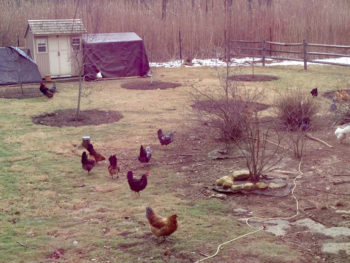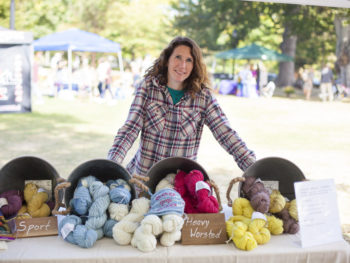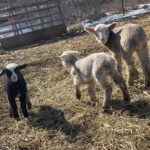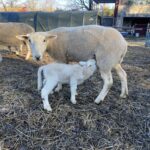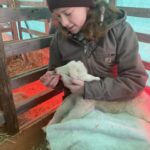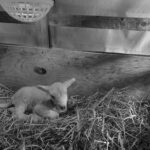
The abundance of June has a way of sneaking up on you. It’s not the obvious overabundance like that of August, when you have so many tomatoes even the average home grower feels like a commercial farmer with pounds and pounds of tomatoes. No, it’s something more subtle. With a very late spring like we had, I am constantly aware that we are behind previous years. I am anxious that the sweet peas did not put on enough growth before the heat is arriving and might not reach their full potential before they are defeated by our intense heat.

And even though I just sowed the french beans two weeks ago, when I scroll through the pictures on my phone I can see just how much has been accomplished in the last few weeks and how much things have grown. The meat chickens practically look like mature hens and roosters now and 7 egg layer chicks are happily feathered out now in the barn.

From the garden we have harvested 14 pints of the most tender strawberries, an abundance of mixed green salads, enjoyed the scent of the first garden bouquets and have resumed the endless exploration of fresh herb uses. The roses are in full bloom and seem to be loving their sheep manure mulch this year. Most of the seedlings from the greenhouse are now in the ground and new seeds have been sown.
Of course there are always more seedlings than garden space so I went searching for a few more feet somewhere convenient and useable right now And it was serendipitous that I reconnected with a friend who is loving her first straw bale garden then year. I kept seeing her Facebook posts about it and finally it clicked that a straw bale garden would be an excellent use of this space I have that will not be a long-term vegetable garden space but is perfect for such a use this year. So, although late to the game, I am in the process of conditioning my bales.

For those of you not familiar with the concept of straw bale gardens, the general principal is that straw (unlike hay) is a hollow tube that holds a lot of moisture. You feed the bales with a high-nitrogen fertilizer initially (you can choose organic or not; I used Milorgonite for my nitrogen source as I didn’t want to attract our animals or excess wildlife with bone meal or feather meal. You fertilize and water over a course of 12 days in general and during that time the bacteria present in the straw feed on the nitrogen and start decomposing the straw. Once the initial heat from this dissipates you can plant your seedling plugs or seeds for whatever you are planting. I plan to try a few different types of plants just to explore this growing method.
At the end of the straw bales’ life (either one or two seasons) you have a lovely mass of biological activity and organic matter to add to your compost pile.
One of the main feature of this method is that you can start the bales really early in the season and the heat of the decomposing straw allows you to plant much sooner. And you can encapsulate this heat with a plastic tent like a little greenhouse as well. So, this will be a fun experiment.
Talking of experiments, we moved the sheep to the chicken field this month. The chickens and turkeys were actually keeping the grass down this season until a couple weeks ago. So, I decided it was time to take the sheep off their current field. It’s a good practice to rotate your sheep grazing pastures as it helps to break the parasitic worm cycle and gives the grass a chance to regrow. And this way the sheep would graze 24/7 and even getting rained on would wash out some of their extra lanolin in their fur. Win win.

Well, the sheep clearly missed their mid-day naps in the barn so they adopted one of the chicken runs as their house. It was quite a funny site but they seemed rather content.
Unfortunately they discovered how good foraging on shrubs was. We circled the shrubs and young fruit trees with 4’ hazard fencing supported by 4’ posts. This kind of protection would not work at all for goats but for sheep I thought it would be fine. They’re meant to be grazers (eating down low) and goats are browsers (eating at the middle height level). Well, it was ok for about 10 days and then Millie figured out how to just lift up the hazard fencing with her head and how to bend the metal posts by putting all of her weight on the fencing. That’s a goat move. The final straw was when she knocked off 60% of my Whitney Crabapples which was fruiting for its first year. When I discovered her mid-Crabapple destruction I managed to get the sheep set up with a run of electric fencing in a new field off the barn within minutes. And once back in the barn, the sheep resumed their demands for two meals a day of grain.
I saw a poster the other day and sadly could relate too easily. It said “I live on a funny farm, ruled by a small army that I created.” Oh well, best to admit when you are beaten. I must be off to feed the sheep their evening grain now.

